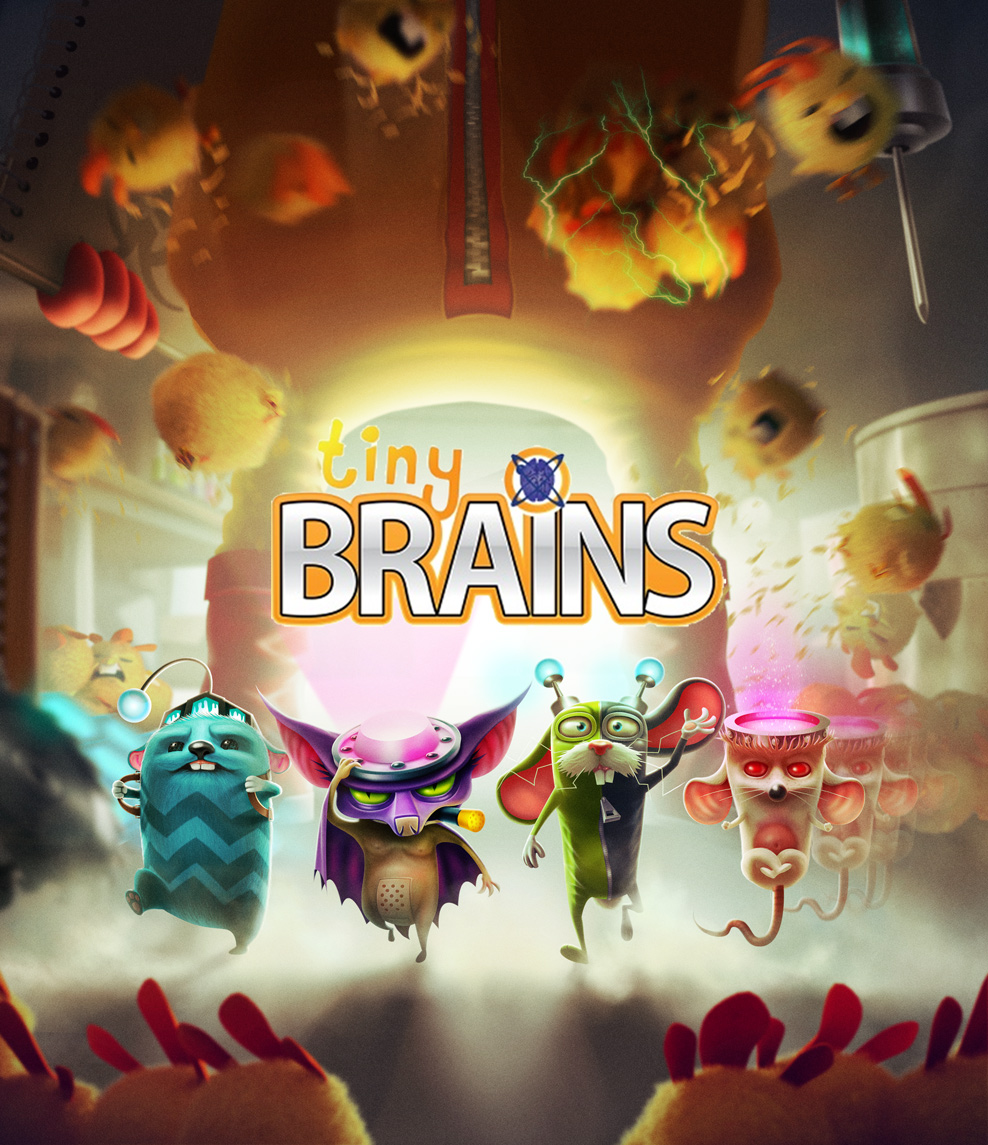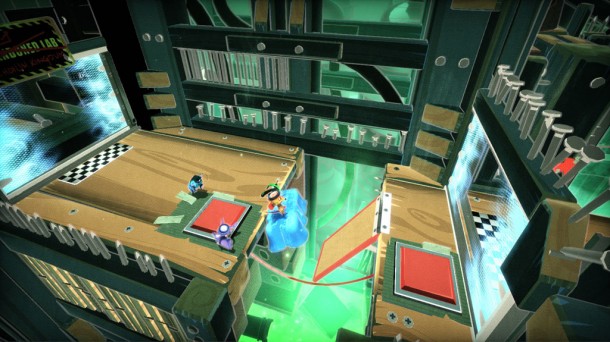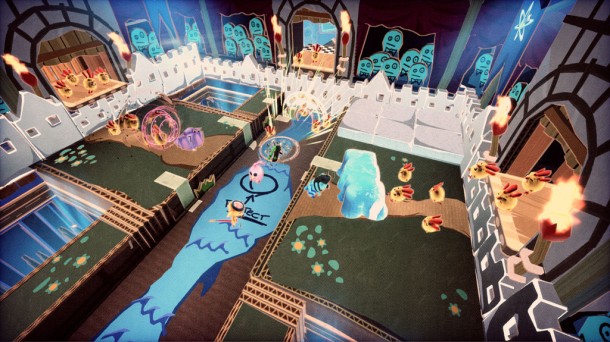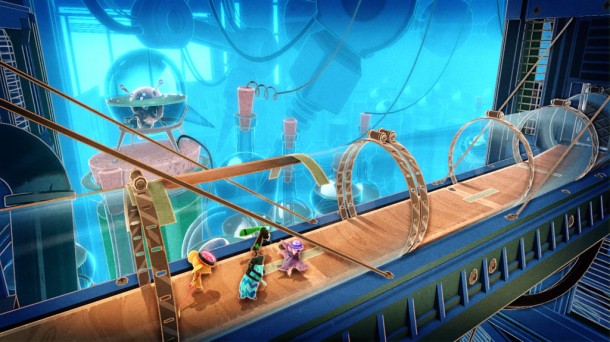Caught up in a console launch that has so far mostly ignored local multiplayer, Spearhead Games’ Tiny Brains wants to bring a group of friends together for a night in front of the television. Through communication, players move through physics puzzles, constantly developing a vocabulary of ability combinations needed to make it to the next chamber. But once there are no longer others to communicate with, Tiny Brains seems rather claustrophobic.
Following the experimentation of four lab animals, players must maneuver their way through puzzle and combat test chambers to take revenge on a doctor who has been performing a few questionable experiments. Players take control of Dax, a bat that can push objects away, Stew, a rabbit that pulls objects to him, Pad, a mouse that can switch places with objects and Minsc, a hamster who can create ice blocks which can then be activated to launch players into the air. Players must use these abilities in different combinations to complete each room’s challenge. One player might need to launch another into the air so that they can swap places with a battery needed to power the exit of a chamber, or the group might have to maneuver a ball through a cylinder with a destructible rotating floor. Each chamber allows players to come up with their own ways to be successful. Tiny Brains is always looking to develop the way a player sees their ability in relation to other players abilities.
The story mode can be a delightful experience as long as things keep moving, and you play with your friends. Accidental deaths, and failures in ability timing can bring out the occasional laugh, but certain combat sections can’t handle the abilities being used at the same time. These combat-focused sections have the players defending a target while waves of chickens attempt to destroy it. Numerous times a combat section needed to be restarted because a player’s ability would accidentally bring an attacker who had just been moved away by another player right next to the target. Player error is mostly to blame for this problem, but it seemed to occur rather frequently. The cramped nature of the environments and extended duration of these combat sections don’t help the problem, either. The campaign consists of just four stages, each of which can be completed in around thirty minutes or so.
Accompanying the story mode are a few challenge stages: Tiny Soccer, and at the completion of story mode, Tiny Trolls, and Jules mode.
The challenge stages are re-purposed story mode rooms with leaderboards to see how fast players can make it through the puzzles, or how many waves of enemies they can survive. A few stages challenge players to see how long they can keep a ball alive, or how far they can get it on a randomly generated course. Tiny Soccer pits players against each other in a traditional soccer setup, but allows each player to use all four of the available abilities. Both of these game types offer a bit of fun, but there was never a real urge to return to them after a round or two in any given play session.
In Tiny Trolls, players use their abilities against each other to impede the and kill one another throughout the story campaign. This mode offers a different way of playing through the campaign, but players could take each other out in the main story. Here it just makes it easier, and killing each other repeatedly only offers a certain level of value before its deterrent to progress hinders enjoyment.
Jules mode is a single-player mode made for focused runs through the campaign. As in Tiny Soccer, the player can utilize all the powers through a single character. Death is an automatic failure in this mode, though, so if you die it’s back to the start of the level. Watching a 20 minute run go up in flames because of one misjudged ability is stressful and almost always made me want to quit playing.
This mode exemplifies a problem with Tiny Brains: it’s just not that fun alone. When playing alone, or with any number of players that isn’t the maximum of four, players are able to switch between any characters not currently in use. Playing through the story mode alone after finishing it can be used as training for Jules mode, but it takes away the interaction of discovery and interpretation of solutions the addition of others brings.
Online play has some problems as well. High scores occasionally don’t post to leaderboards. Additional online players sometimes brought performance issues like slow framerates. Local players are allowed online, but only the session host is allowed to bring local players with them. Story mode and the challenge stages are the only game types available for play online, leaving Tiny Soccer and Tiny Trolls reliant on local co-op. To join an online game players choose a story mission or challenge stage and attempt to connect to a game. There is no way to filter how full or how far along a group is when connecting to it. Online is assisted by the use of the Dualshock 4’s touch pad. Players can use the pad to point an arrow to assist other players in setting up an ability.
Tiny Brains wants the player to have fun with others. Whether it’s the joy in solving a puzzle together or the excitement of fighting for just a little more distance in a challenge stage, Tiny Brains hits its stride when there is little to no barrier in communication between players. However, the game’s experiments have diminishing returns; after just a few trial runs your test group might want to move on to a new experiment.
Tiny Brains was reviewed on the PS4 using a PSN download of the game provided to SideQuesting by developer Spearhead Games. Tiny Brains will also be available on PS3 and PC through Steam at a later date.






No Comments